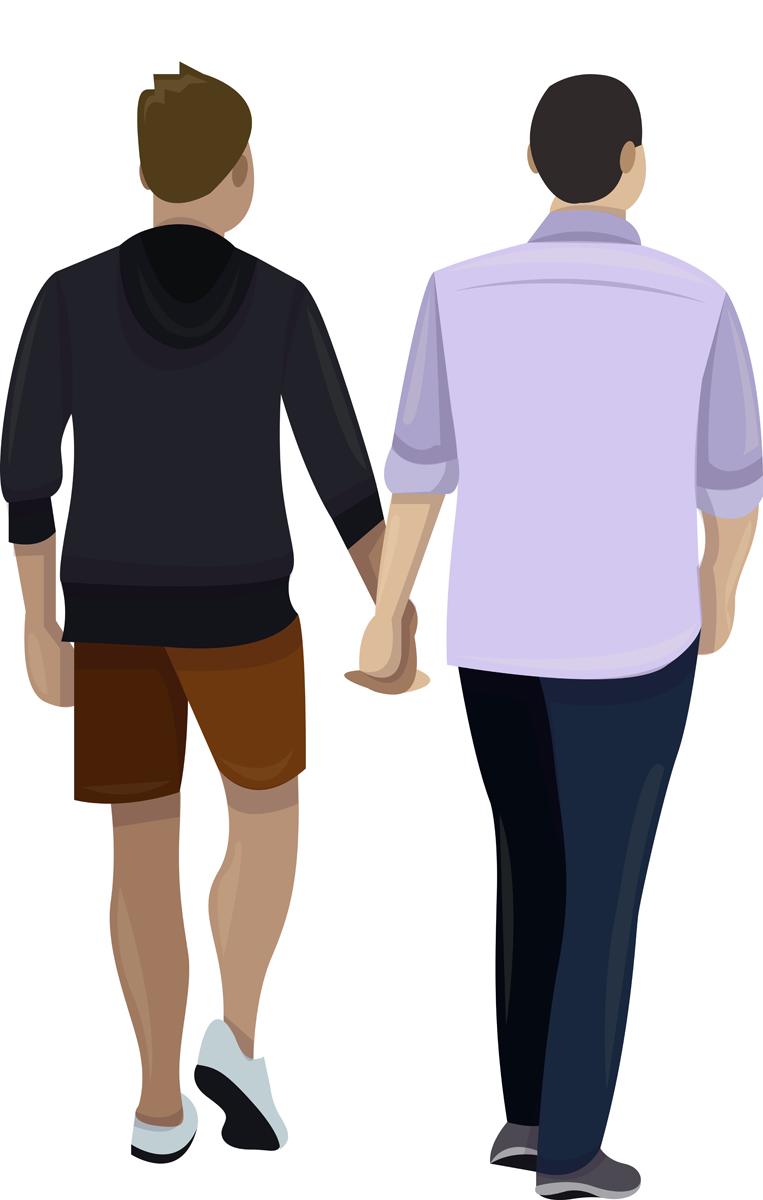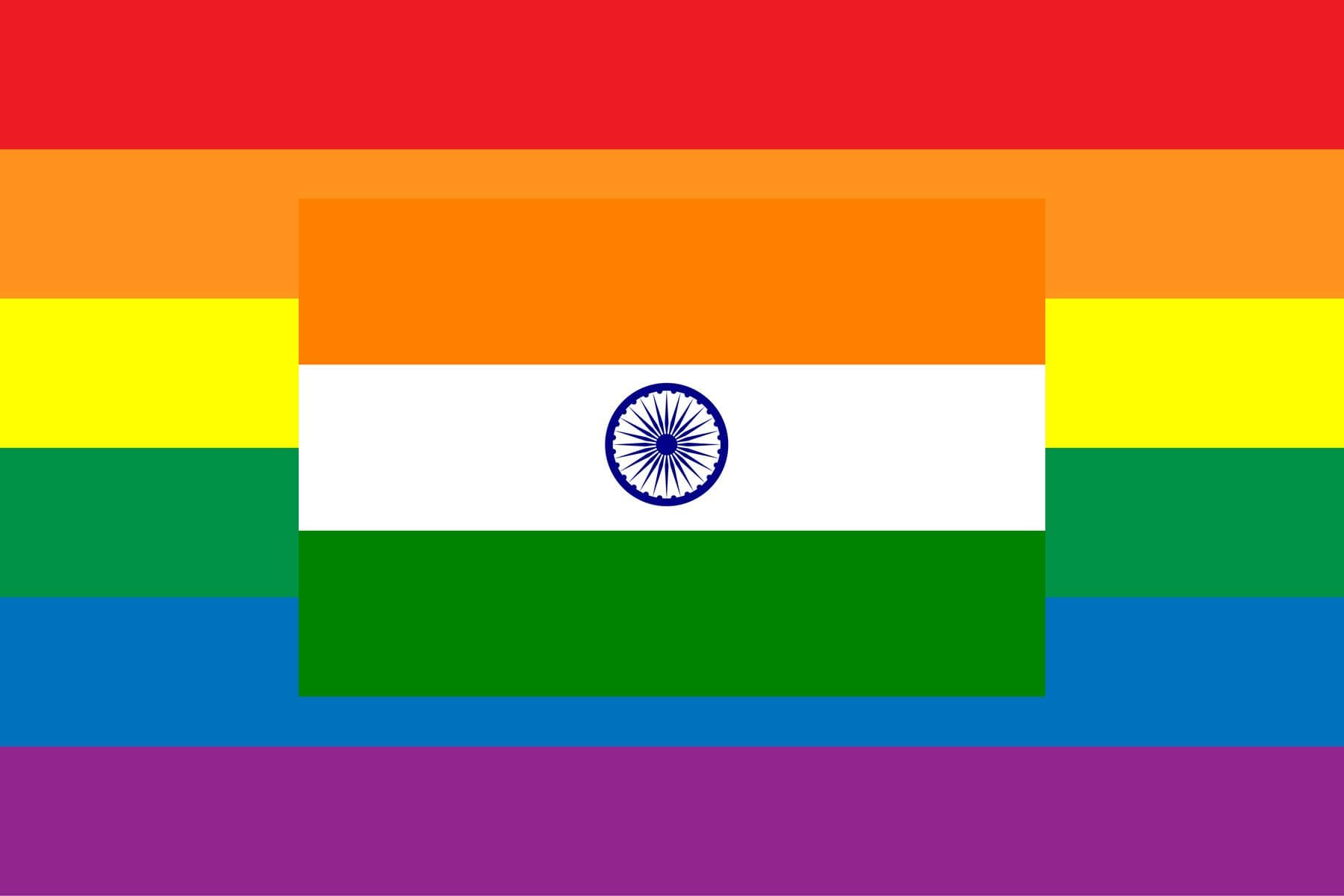Certain cultural norms play to the advantage of queer travelers to India. Keep them in mind for a hassle-free trip.
It is generally accepted that clichés often have an element of truth to them. This holds in the case of India too. You won’t necessarily find elephants and snake charmers jostling for elbow room in the city (probably), but you can expect contradictions that boggle the mind. Here, various aspects of diversity intersect in a web so layered and complex that even natives struggle to get their head it around at times. You can expect color, noise, laughter, food, crowds—for everything else, leave those preconceptions at home.
India is no herald of LGBTQ+ rights. This is despite evidence of a spectrum of sexualities in historical times. While transgender individuals are legally allowed to self-identify as male, female, or other, it was only in September 2018 that Section 377, a British-era remnant of homophobia, was read down by the Supreme Court. But Section 377 or not, there are an
When in India, do as (gay) Indians do.
estimated 100-million+ queer individuals in India. And just like in any other part of the world, they have continued to fall in love, built lives together, and traveled with their near and dear for eons. And ironically, their biggest threat—a deeply conservative society—is also what keeps them safe. In other words, if one is willing to pick one’s battles and co-opt certain cultural norms to one’s advantage, traveling as a gay (gay referring to a range of sexualities) individual or couple can be exactly the adventure you imagine. In short: when in India, do as (gay) Indians do.
Recommended Fodor’s Video
The Cloak of Invisibility
The worst thing that has ever happened to Ashdeen, 38, while traveling with a partner, is being given separate beds. “Annoying,” is the word he uses, and he laughs as he says it. He might as well, because this is very likely the only battle you will fight as a queer couple in India. Not many travelers see it as overt homophobia, though. “I think people are just used to a certain idea of what the norm is,” says John, 53, who’s partner was noted as “Mrs” in a fancy hotel. “If it was a dive, I understand that, but this was, you know, supposedly a five-star.” John, who’s from the US, and whose husband is Indian (they married in the US), did get the mistake corrected.
Being mistaken for siblings, cousins, friends, and in one unfortunate personal trip, mother and daughter, is par for the course. Nina and her partner, both in their 40s, who travel frequently by train and to rural regions, speak of curious glances directed at them. “But we’ve never felt threatened,” she says. The advantage of being older and looking very feminine works to their advantage. “[In interior areas] people only wonder why two women are traveling unescorted. A young hetero couple might attract more of an unpleasant sort of attention, though.”
This “moral policing” of heterosexual couples is somewhat amusing, especially because it has a direct hand in same-sex couples slipping through the radar. There are hotels, for instance, that ask straight couples to prove they are married, failing which, they are forced to take separate rooms. Moreover, given that it is perfectly acceptable for two men or two women to share a bed, even a demand for double beds go unremarked. “It’s sad,” says 22-year-old Arushi, “but [traveling as a queer couple] is convenient because of invisibility.”

This invisibility, though, doesn’t work for everyone. “I tell people[that I’m gay] up front,” admits John. “If I’m organizing a car or a guide, I will make sure they know. If they have a problem with it, I’m not giving them my money.” That said, among the range of respondents, no one recalled a bad experience, no one was turned away from a tourist destination when they demanded a double bed or admitted to being a couple. “I don’t think it’s the first thing they think about,” says Ashdeen. “What they see is a couple of men traveling together.”
To some extent, there is safety in this erasure. “It’s odd to be mistaken for sisters, but I don’t really mind,” says Tashi, Arushi’s partner, who finds it more amusing than annoying. But she does caution about going in with preconceived notions. “People can be warm and open in rural areas, while urban, educated people can be extremely homophobic.” It’s not easy to judge what spaces may or may not be safe, especially when tourists traveling in a group, putting up in a homestay, or interacting with locals are likely to find themselves welcomed into homes, festivities, and other private gatherings.
Subverting Social Sanction
If one were to pick a single aspect that remains constant across India’s mind-bending diversity it would be the sense community or family. Families are close-knit, usually strictly hetero-patriarchal in nature, but also large-hearted, elastic spaces that expand as required to include friends, friends of the extended family, itinerant acquaintances, and sometimes even strangers. Same-gender partners are very often accepted as family, without a label or explanation for the relationship to be explicitly defined (this may be changing in recent times as more and more younger people feel the need to be open about their sexuality).
Sheryn, 43, a writer, refers to it as “flying under the radar,” an advantage of not having the pressures of couple-dom as in the West. “But the hospitality and friendliness can lure you into a sense of safety that may not be there,” she cautions. “Generally being circumspect about personal details is advisable, though in some circumstances, it’s okay to share—people are not an exact science!”
In India, generally, there is no significance attached to two men or two women holding hands or being casually affectionate towards each other. Then again, there is a gender aspect to this at times. As Tashi says: “Gays get more attention than lesbians in general, so the thought that two women holding hands are a couple doesn’t really enter people’s minds. It’s possible two men may get more negative attention.” John, however, contends that men tend to have it easier since they have greater freedom of movement. The takeaway is that on a romantic lakeside walk hand in hand with your same-gender significant other, you’re more likely to be pegged as friends or siblings.

Similarly, sleeping in the same bed, putting arms around each other, sharing food and drinks—all of this is acceptable between friends of the same gender. This means that queer couples can get away with a certain amount of public display of affection that is completely out of the question for heterosexual couples. Here too, being an obvious non-native—especially white—can be a huge advantage. You will be forgiven for “behaving strangely” if you are a foreigner, something that works to John’s advantage: “Here in India, because I’m white, I’m safer. I know I have privilege in that regard.” And so, he tends to be more in-your-face about his sexuality. “But when we travel in rural or smaller areas, I think we become more cognizant of our surroundings.” It’s about respecting local culture, he adds. “By all means hold your partner’s hand, but don’t start making out under the banyan tree.”
Arushi has experiences of being misgendered on buses and trains. “But people are usually apologetic when they figure it out.”
Gender-queer individuals do get second glances. Arushi has experiences of being misgendered on buses and trains. “But people are usually apologetic when they figure it out.” My personal experience has been of a certain amount of aggression, mostly from women who may think they are objecting to a male sharing a female-only space, but standing one’s ground and speaking up has always worked.
Avoiding the Snake Pits
It goes without saying that some general rules—also known as common sense—apply. Public display of affection beyond hand holding or casual touching is out, gay or straight. There may be spaces in urban areas where it is permissible, but it is advisable to desist. Dressing appropriately and being respectful of local customs are, of course, no-brainers.
Robin Saikhom, who runs an inclusive travel company (Serene Journeys), scoffs at a term such as “gay travel.” “Gay, lesbian, bisexual, straight—you have to come prepared for everything, to go with the flow,” he says. Engaging a travel agent or tour planner, or having prior bookings are advised, since spur-of-the-moment plans might lead to a susceptibility to scams. However, with taxi aggregator apps and online bookings, getting around, and making reservations, travel in general has only become easier.
As for the hospitality industry, they aren’t quite waving their rainbow flags from the rooftops yet, but in a private conversation, a resort manager said, “All I want to know is if you have proper identity documents. Beyond that, it’s none of my business.” John sums it up a little more colorfully: “At the end of the day, it’s business and they want the money. They may burn the sheets later, I don’t care.”




